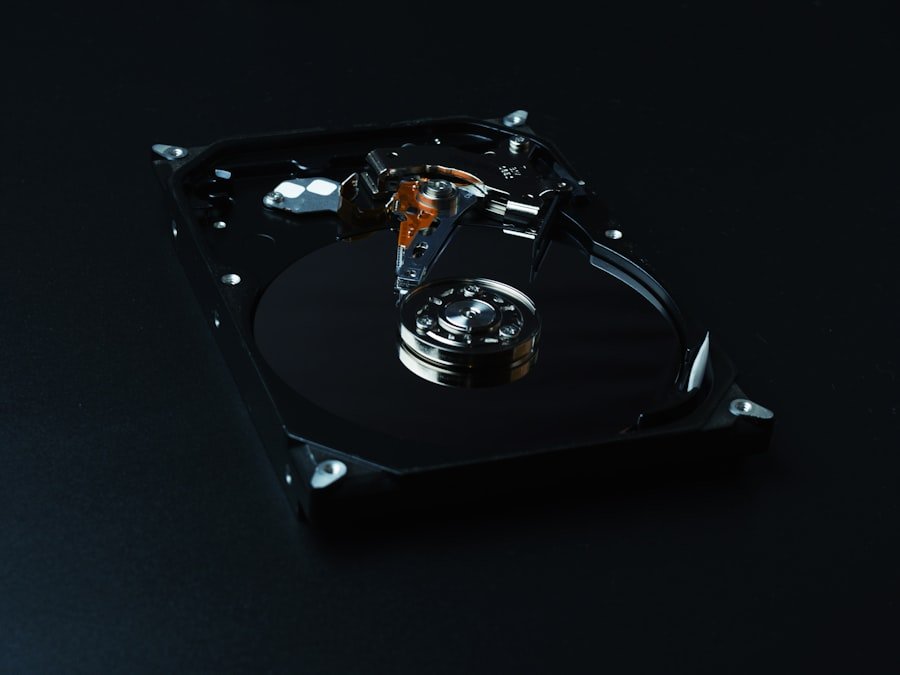When faced with a malfunctioning iPhone, the first step is to assess the extent of the damage. This involves a thorough examination of both the physical and software aspects of the device. Start by checking for visible signs of damage, such as cracks on the screen, water exposure indicators, or any unusual bulging that might suggest battery issues.
If the device has been dropped, it’s essential to inspect for any loose components or misaligned parts. A careful visual inspection can often reveal whether the problem is superficial or indicative of deeper issues. Beyond physical damage, it’s crucial to evaluate the operational state of the iPhone.
Does it power on? Are there any error messages displayed? Can you access your apps and data?
If the device powers on but behaves erratically, it may be a software issue rather than hardware failure. In such cases, performing a soft reset or a force restart can sometimes resolve minor glitches. However, if the iPhone fails to respond altogether, it may indicate a more serious problem that requires further investigation.
Understanding the nature of the damage is vital for determining the appropriate next steps.
Key Takeaways
- Assess the damage to your iPhone to understand the extent of the problem
- Back up your iPhone to ensure that you don’t lose any important data during the recovery process
- Use a professional data recovery service if you are unable to recover the data on your own
- Try to repair the iPhone by following troubleshooting steps or seeking professional help
- Use iTunes or iCloud backup to restore your data if you have previously backed up your iPhone
- Use a third-party software to recover data if traditional methods are not successful
- Seek help from Apple Support for technical assistance and guidance
- Remove the memory card from your iPhone to access and recover data separately
- Consider using a data extraction tool to retrieve data from your iPhone
- Consult with a phone repair specialist for expert advice on recovering your data
- Protect your photos in the future by regularly backing up your iPhone and using secure storage options
Back Up Your iPhone
Backing up with iCloud
If you choose iCloud, make sure you are connected to Wi-Fi and navigate to Settings > [Your Name] > iCloud > iCloud Backup, then tap “Back Up Now.” This method allows you to store your data securely in the cloud, making it accessible from any device with your Apple ID.
Backing up with iTunes
Alternatively, if you prefer a local backup, connect your iPhone to a computer and use iTunes (or Finder on macOS Catalina and later). Open iTunes, select your device, and choose “Back Up Now.” This method creates a complete backup of your device on your computer, which can be particularly useful if you have a large amount of data or if you want to ensure that your backup is not dependent on internet connectivity.
Why Backing up is Essential
Regardless of the method chosen, backing up your data is an essential precaution that can save you from potential data loss.
Use a Professional Data Recovery Service

If your iPhone has sustained significant damage and you are unable to access your data through conventional means, enlisting a professional data recovery service may be necessary. These services specialize in retrieving lost or inaccessible data from damaged devices. They employ advanced techniques and tools that are not available to the average user, making them capable of recovering data even from severely compromised devices.
When selecting a data recovery service, it’s important to do thorough research. Look for companies with positive reviews and proven success rates in recovering data from iPhones. Many reputable services offer free consultations to assess the damage and provide an estimate for recovery costs.
Keep in mind that while professional recovery can be effective, it can also be expensive, so weigh the value of your lost data against the potential costs involved. In some cases, these services can recover photos, contacts, messages, and other critical information that might otherwise be lost forever.
Try to Repair the iPhone
| Issue | Success Rate | Cost |
|---|---|---|
| Cracked Screen | 80% | 100 |
| Water Damage | 50% | 150 |
| Battery Replacement | 90% | 80 |
If your assessment indicates that the damage is primarily physical but not catastrophic, attempting to repair the iPhone yourself may be an option worth considering. There are numerous online resources and guides available that provide step-by-step instructions for common repairs, such as replacing a cracked screen or fixing battery issues. However, this approach requires a certain level of technical skill and comfort with handling electronic devices.
Before embarking on a DIY repair journey, ensure that you have all necessary tools and replacement parts at hand. Websites like iFixit offer comprehensive repair kits and guides tailored specifically for various iPhone models. If you feel confident in your abilities, following these guides can save you money compared to professional repair services.
However, if you encounter difficulties or if the damage is more extensive than anticipated, it may be wise to consult with a professional technician who can provide expert assistance.
Use iTunes or iCloud Backup
In situations where your iPhone is operational but experiencing issues, utilizing an existing backup can be an effective way to restore functionality. If you have previously backed up your device using iTunes or iCloud, restoring from one of these backups can help resolve software-related problems that may be causing your device to malfunction. To restore from an iTunes backup, connect your iPhone to your computer, open iTunes, select your device, and choose “Restore Backup.” This process will overwrite current data with what was saved in the backup.
For those who prefer using iCloud, navigate to Settings > General > Reset > Erase All Content and Settings on your iPhone. After erasing the device, follow the prompts to set it up again and select “Restore from iCloud Backup” during the setup process. This method allows you to recover not only your apps and settings but also your photos and other important data stored in the cloud.
It’s essential to ensure that you have a recent backup before proceeding with this step to avoid losing any new data created since the last backup.
Use a Third-Party Software

If traditional methods of recovery are not yielding results, third-party software solutions can provide an alternative avenue for retrieving lost data from an iPhone. Numerous applications are designed specifically for data recovery purposes and can help recover deleted files such as photos, messages, contacts, and more. These tools often come with user-friendly interfaces that guide users through the recovery process without requiring extensive technical knowledge.
When selecting third-party software for data recovery, it’s crucial to choose reputable programs with positive user reviews and proven effectiveness. Some popular options include Dr.Fone, EaseUS MobiSaver, and Tenorshare UltData. These applications typically offer free trials that allow users to scan their devices for recoverable data before committing to a purchase.
While these tools can be effective in many cases, they may not always guarantee success, especially if the data has been overwritten or if there is significant physical damage to the device.
Seek Help from Apple Support
If all else fails and you find yourself unable to resolve the issues with your iPhone independently, reaching out to Apple Support is a prudent course of action. Apple’s customer service representatives are trained to assist users with a wide range of problems and can provide guidance tailored specifically to your situation. Whether it’s troubleshooting software issues or discussing repair options for hardware problems, Apple Support can help navigate the complexities of device recovery.
To contact Apple Support, visit their official website or use the Apple Support app on another device if available. You can schedule a call or chat session with a representative who will guide you through troubleshooting steps or help arrange for repairs at an Apple Store or authorized service provider. Additionally, Apple offers resources such as online forums and support articles that may provide solutions for common issues encountered by users.
Remove the Memory Card
For users who have an iPhone model that supports external storage via memory cards (though this is rare as most models do not), removing the memory card can sometimes facilitate data recovery efforts. If your device has been experiencing issues related to storage corruption or file access problems linked to external memory, removing the card may help isolate these issues. Once removed, users can attempt to access their data directly from their primary storage or use specialized card readers to recover files from the memory card itself.
However, it’s important to note that most modern iPhones do not support expandable storage through memory cards; they rely solely on internal storage options. In such cases where external memory is not applicable, focus should shift towards other recovery methods such as backups or professional services as previously discussed.
Consider Using a Data Extraction Tool
In instances where standard recovery methods fail due to severe software corruption or hardware malfunctions, employing a data extraction tool may be necessary. These specialized tools are designed to bypass certain restrictions imposed by damaged operating systems or malfunctioning hardware components. They can extract data directly from an iPhone’s internal storage even when conventional access methods are unavailable.
Data extraction tools often require a higher level of technical expertise than standard recovery software; therefore, users should proceed with caution and ensure they understand how to use these tools effectively before attempting recovery. Some well-known extraction tools include PhoneRescue and iMyFone D-Back. These applications typically offer detailed instructions and support resources to assist users in navigating complex recovery scenarios.
Consult with a Phone Repair Specialist
If DIY repairs and software solutions do not yield satisfactory results, consulting with a phone repair specialist may be necessary for more complex issues. These professionals possess extensive training and experience in diagnosing and repairing various smartphone problems. They can provide insights into whether repairs are feasible or if data recovery is possible given the specific circumstances surrounding your device’s condition.
When seeking out a repair specialist, look for certified technicians who have experience working specifically with iPhones. Many repair shops offer free diagnostics that can help identify underlying issues without any upfront cost. Additionally, inquire about warranties on repairs performed; reputable specialists often provide guarantees on their work which can offer peace of mind when entrusting them with your device.
Protect Your Photos in the Future
Once you have navigated through the challenges of recovering lost data from your damaged iPhone, it’s essential to implement strategies that will protect your photos and other important files in the future. Regularly backing up your device is one of the most effective ways to safeguard against potential data loss. Establishing a routine backup schedule—whether daily, weekly, or monthly—ensures that even if something goes wrong again, you will have recent copies of your important files readily available.
In addition to regular backups, consider utilizing cloud storage solutions such as Google Photos or Dropbox for additional redundancy. These platforms allow users to automatically upload photos and videos directly from their devices, providing an extra layer of security against accidental deletions or hardware failures. Furthermore, enabling features like “Optimize Storage” on your iPhone can help manage space while ensuring that copies of your photos remain accessible in case of emergencies.
By taking proactive measures now—such as regular backups and utilizing cloud services—you can significantly reduce the risk of losing precious memories in the future while ensuring that your digital life remains secure and organized.
FAQs
What should I do if my iPhone is broken and I need to retrieve photos from it?
If your iPhone is broken, the first step is to try to get it repaired by a professional. If that is not possible, you can try to retrieve the photos using a few different methods.
Can I retrieve photos from a broken iPhone myself?
Yes, it is possible to retrieve photos from a broken iPhone yourself, but it may require some technical knowledge and the right tools.
What are some methods to retrieve photos from a broken iPhone?
Some methods to retrieve photos from a broken iPhone include using a third-party software, connecting the iPhone to a computer, or using iCloud or iTunes backup.
Is it possible to retrieve photos from a water-damaged iPhone?
It may be possible to retrieve photos from a water-damaged iPhone, but it is important to act quickly and seek professional help to prevent further damage to the device.
What should I do if I am unable to retrieve photos from my broken iPhone?
If you are unable to retrieve photos from your broken iPhone using DIY methods, it is best to seek professional help from a reputable repair service or data recovery specialist.










